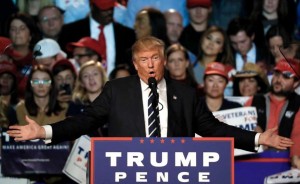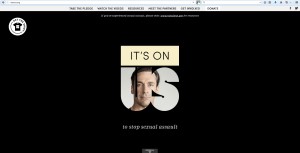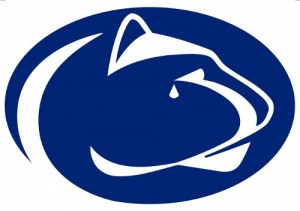As a follow-up to my piece in The Chronicle of Higher Education, I was recently a guest on the Navigating Change podcast, where I talked more lessons for college and university leaders from the Sandusky scandal at Penn State University and the Nassar scandal at Michigan State University.
Campus Safety
Sandusky, Nassar, and our responsibility as university leaders
I spent much time the last couple of weeks following the sentencing hearing of former Michigan State University professor and doctor Larry Nassar. I was watching from the perspective of having been associated with now a second university embroiled in a sexual abuse scandal, having worked at Michigan State before coming to USF, and before that, at Penn State University when the Sandusky scandal broke there. This week I wrote an op-ed in The Chronicle of Higher Education about my experience at these two institutions, and what it tells us about the responsibility of university leaders.
Bigoted actions across the nation and President-elect Trump

During the presidential campaign I wrote about the higher education proposals of Hillary Clinton and Donald Trump. Since the election last week there has been so much that has happened in our country that I almost wouldn’t know where to start to comment. However, one thing that has been very disturbing has been the outbreak of racist, nationalist, misogynist, anti-immigrant, and other bigoted actions across the nation. This morning’s San Francisco Chronicle has an op-ed I authored calling on President-elect Trump to take quick action to stop them.
A potentially misleading aspect of the It’s On Us campaign
In 2014 the White House launched a new Public Service Announcement (PSA) campaign to help combat sexual assault at the nation’s colleges and universities. Titled “It’s On Us,” the campaign uses celebrities to help raise awareness about the problem – what some are calling an epidemic – of sexual assault and rape in higher education.

This issue has received much attention from policymakers as well as the media over the last few years. The U.S. Department of Education, through its enforcement of Title IX of the Higher Education Act of 1965, has stepped up its oversight of how colleges adjudicate reports of sexual harassment and assault. The recent case of Brock Turner, a Stanford University student athlete convicted of sexually assaulting a woman while she was unconscious – and who received only a 6-month prison sentence for the act – has brought the issue to the forefront of the news once again.
Continue reading “A potentially misleading aspect of the It’s On Us campaign”
New regulations to combat sexual assault on college campuses

The White House yesterday announced a new series of proposals to force colleges and universities to do a better job to prevent sexual assaults on campuses, and to do more to support the victims of assaults when they do occur. The proposals came from a high-level task force the president created in January (it contained three cabinet secretaries) to address an issue that has received intense scrutiny both on college campuses, as well as in the media, in the last year or so.
A key finding of the task force, as reported in The New York Times, is that, “one in five female college students has been assaulted, but that just 12 percent of such attacks are reported.” As a father with one daughter in college, and a second heading there in the future, these numbers are disturbing. It is clear that we in higher education need to heed the call for reform.
Continue reading “New regulations to combat sexual assault on college campuses”
Education in the news again. . . and again. . . and again. . .
When I co-taught a graduate seminar in  educational policy, my colleague and I would often use examples from the news media. We would discuss with our students the frequency with which educational issues are discussed in the news, and why. Education is a topic that is often at the forefront of discussion among the general public as well as policymakers, and because of this, it merits attention from the media.
educational policy, my colleague and I would often use examples from the news media. We would discuss with our students the frequency with which educational issues are discussed in the news, and why. Education is a topic that is often at the forefront of discussion among the general public as well as policymakers, and because of this, it merits attention from the media.
Even with all this focus I am still struck, however, by the high volume of stories about education you will find in the press. I often start my day at work by looking online at some key media for stories about education. This may include the websites of The New York Times, the Washington Post, The Chronicle of Higher Education, and Education Week. On rare occasions, I actually get to read the hard copy of these publications, and yesterday was one of those occasions. I was flying to Boston, so I grabbed The New York Times to take with me on the plane.
Continue reading “Education in the news again. . . and again. . . and again. . .”
More bad news for Penn State
 Last summer, I wrote a post about the Freeh Report, the investigative report commissioned by the Board of Trustees of Penn State University in the wake of the Jerry Sandusky scandal. The report painted a damning portrait of the leadership of the university and the steps those leaders took to conceal the child abuse perpetrated by Sandusky. I wrote an op-ed for the Chronicle of Higher Education when the report was released, outlining my disappointment with what had transpired.
Last summer, I wrote a post about the Freeh Report, the investigative report commissioned by the Board of Trustees of Penn State University in the wake of the Jerry Sandusky scandal. The report painted a damning portrait of the leadership of the university and the steps those leaders took to conceal the child abuse perpetrated by Sandusky. I wrote an op-ed for the Chronicle of Higher Education when the report was released, outlining my disappointment with what had transpired.
This past week, word came out of Harrisburg of the indictment of former Penn State President Graham Spanier, on eight charges, including five felonies. The felony charges include obstruction of justice, perjury, and conspiracy, all related to Spanier’s part in the active covering up of Sandusky’s abuse of children that was allegedly reported to Spanier in 1998 and 2001.
A sad day at Penn State
 Today, former FBI Director Louis Freeh released his investigative report into the Jerry Sandusky scandal at Penn State. In some ways, my time there seems like it is a long way in my past, but in others it’s still very fresh in my memory. The unfolding of the scandal less than two months before I left, and over the subsequent eight months, has kept me connected to my former employer in ways that I never would have anticipated when I accepted the job here at Michigan State.
Today, former FBI Director Louis Freeh released his investigative report into the Jerry Sandusky scandal at Penn State. In some ways, my time there seems like it is a long way in my past, but in others it’s still very fresh in my memory. The unfolding of the scandal less than two months before I left, and over the subsequent eight months, has kept me connected to my former employer in ways that I never would have anticipated when I accepted the job here at Michigan State.
Today I published a commentary piece in The Chronicle of Higher Education about the release of the Freeh report and its findings. I won’t repeat what I said there; you can read it for yourself. Suffice it to say that reading the report, and then writing about what it means for Penn State, has saddened me a great deal. But I believe that the story needs to be told to ensure that these kinds of heinous crimes, and inaction on the part of the leaders of the university, are not repeated at Penn State or elsewhere. My thoughts are with the victims of the crimes and their families, as well as with all my friends and colleagues back at Penn State who will be dealing with the fallout of the scandal for some time into the future.